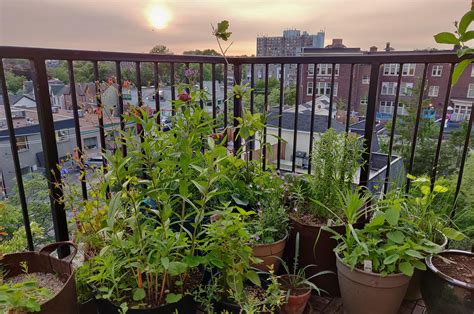Transforming Your Balcony into a Thriving Wildlife Habitat
In today’s urban environments, the demand for eco-friendly and sustainable spaces is growing. For apartment dwellers, creating a wildlife habitat on your balcony offers a chance to contribute to biodiversity and bring outdoor beauty into your home. Whether you’re an expert in urban gardening or a novice with a passion for nature, this guide will provide you with the essential gardening tips to turn your balcony into a thriving ecosystem for birds, insects, and small animals.
Key Concepts
Before delving into the practical steps, let’s define a few key concepts that are central to successful balcony gardening for wildlife:
- Biodiversity: The variety of life in a particular ecosystem. On your balcony, this means attracting different species of plants, insects, and small animals.
- Container Gardening: Growing plants in pots and containers rather than in the ground. This is essential for balconies where there’s no soil access.
- Microhabitat: A small, specialized environment. Each pot or section of your balcony can become a distinct microhabitat supporting various life forms.
- Eco-friendly Practices: Techniques that reduce waste, conserve water, and promote sustainability while gardening.
Historical Context
The practice of gardening for wildlife on small, urban spaces has evolved significantly over the years. While gardens were traditionally seen as a luxury for suburban and rural homes, the rise of urban gardening in the 21st century has made it possible to bring nature back into cities. Early efforts to create wildlife-friendly urban spaces began with community gardens and rooftop projects, but personal balcony gardens are a more recent development, made popular by the growing awareness of biodiversity loss and climate change.
Current State Analysis
Urbanization has drastically reduced the natural habitats available for wildlife, making it harder for birds, bees, and other creatures to find homes. However, there’s a growing movement towards eco-friendly practices in cities, where individuals are converting their balconies into wildlife habitats. These efforts not only promote biodiversity, but also create personal sanctuaries that contribute to urban health and well-being.
The success of a balcony habitat depends on several factors, including available space, sunlight exposure, and plant choices. Container gardening allows for flexibility in designing your space, but careful planning is essential to create a balanced, inviting environment for wildlife.
Practical Applications
To turn your balcony into a wildlife habitat, follow these practical steps:
- Plant Native Species: Choose plants that are native to your region, as they are most likely to attract local wildlife. For example, wildflowers and herbs native to your area will support local pollinators like bees and butterflies.
- Offer Food and Water: Install bird feeders, insect hotels, and small water sources like bird baths or shallow bowls. This will attract a variety of species to your balcony.
- Provide Shelter: Use potted plants, climbing vines, and small bushes to create hiding spots for insects and birds. Add nesting boxes for birds or bat houses to increase biodiversity.
- Emphasize Vertical Gardening: Use vertical space effectively by installing hanging planters, wall-mounted containers, or trellises for climbing plants. This maximizes your growing area and offers more habitat for wildlife.
- Minimize Chemical Use: Avoid pesticides and chemical fertilizers, as these can harm wildlife. Instead, use organic compost and natural pest control methods such as companion planting.
Case Studies
Below are examples of successful balcony habitats that have been created in urban areas:
| Location | Habitat Features | Wildlife Attracted |
|---|---|---|
| Berlin, Germany | Native wildflowers, insect hotel, bird bath | Bees, butterflies, sparrows |
| New York, USA | Vertical garden, bird feeder, organic compost | Songbirds, squirrels, beneficial insects |
| Tokyo, Japan | Potted herbs, water bowl, climbing ivy | Beetles, pigeons, small reptiles |
Stakeholder Analysis
Creating a balcony wildlife habitat involves multiple stakeholders:
- Homeowners: Benefit from increased property value, aesthetic appeal, and personal satisfaction of supporting biodiversity.
- Wildlife: Birds, insects, and other creatures gain shelter, food, and breeding grounds in otherwise hostile urban environments.
- Urban Planners: Encouraging wildlife habitats on balconies can contribute to larger urban biodiversity projects and environmental sustainability goals.
- Community: Neighbors may also enjoy the aesthetic beauty of the balcony garden, as well as a more vibrant ecosystem within the urban setting.
Implementation Guidelines
Follow these guidelines to create a sustainable, wildlife-friendly balcony:
- Start Small: Begin with a few key plants and gradually expand your habitat as you observe which species your balcony attracts.
- Track Your Progress: Keep a log of the wildlife species that visit your balcony and adjust your plant selection accordingly.
- Collaborate with Neighbors: Work with other apartment dwellers to create a network of balcony gardens that can support a broader range of species.
- Ensure Maintenance: Regularly water and prune your plants, clean bird feeders, and replace water in bowls to maintain a healthy habitat.
Ethical Considerations
While creating a balcony wildlife habitat is beneficial for biodiversity, there are ethical considerations to keep in mind:
- Invasive Species: Avoid planting non-native species that could disrupt the local ecosystem.
- Safety of Wildlife: Ensure that your setup does not inadvertently put wildlife at risk. For example, position bird feeders away from windows to prevent collisions.
- Neighborhood Impact: Respect your neighbors’ space and ensure that your garden doesn’t cause nuisances like excess noise, pests, or odors.
Limitations and Future Research
While a balcony wildlife habitat can be a powerful tool for supporting urban biodiversity, there are limitations. Space constraints may limit the diversity of plants and animals you can attract, and varying environmental conditions such as pollution or noise may impact the success of your garden. Additionally, more research is needed to assess the long-term impacts of urban wildlife habitats on larger ecosystems and to develop best practices for maintaining these habitats sustainably in high-density areas.
Expert Commentary
Experts in urban ecology and gardening emphasize that even small contributions can have a meaningful impact on local ecosystems. By converting your balcony into a wildlife habitat, you’re participating in a growing movement towards sustainable living and urban biodiversity. The future of urban environments may very well depend on these small, individual efforts to support wildlife, with the cumulative impact being significant over time.


